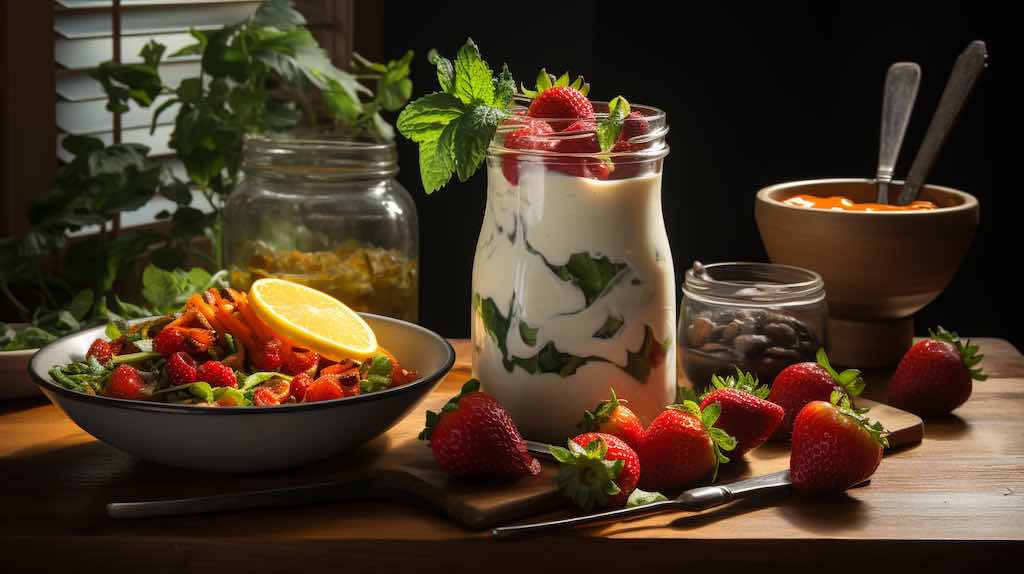As the world faces the challenges of climate change, the need for renewable energy has never been more pressing. In this article, we will take a closer look at the top 5 renewable energy sources and explore their potential for powering our future. From harnessing the power of the sun to tapping into the Earth’s heat, let’s dive into the exciting world of renewable energy!
Understanding Renewable Energy: An Overview
Before we delve into the different types of renewable energy, it’s important to understand why it’s so crucial. Unlike fossil fuels, which are finite and contribute to greenhouse gas emissions, renewable energy sources are sustainable and have minimal environmental impact. By embracing renewable energy, we can reduce our carbon footprint and create a cleaner, greener future for generations to come.
The Importance of Renewable Energy
Renewable energy plays a vital role in mitigating climate change. By transitioning away from fossil fuels, we can reduce our reliance on non-renewable resources and decrease harmful emissions. Additionally, renewable energy sources offer energy independence, providing stability and security for countries that have abundant renewable resources.
Moreover, the adoption of renewable energy sources can have significant economic benefits. The renewable energy sector has the potential to create millions of jobs worldwide, driving economic growth and fostering innovation. By investing in renewable energy technologies, countries can stimulate their economies while simultaneously addressing environmental concerns.
Furthermore, renewable energy sources can enhance energy access and affordability, particularly in remote or underdeveloped areas. Solar panels and wind turbines can provide electricity to communities that are off the grid, improving their quality of life and promoting social equity. By expanding access to renewable energy, we can bridge the energy gap and ensure that everyone has the opportunity to thrive.
The Different Types of Renewable Energy
There are several renewable energy sources that hold great potential for widespread adoption:
- Solar Energy: Solar energy harnesses the power of the sun to generate electricity. Solar panels, made up of photovoltaic cells, convert sunlight into usable energy. This abundant and renewable energy source is becoming increasingly affordable and efficient, making it a popular choice for both residential and commercial applications.
- Wind Energy: Wind energy utilizes the force of the wind to generate electricity. Wind turbines, equipped with large blades, capture the kinetic energy of the wind and convert it into electrical energy. Wind farms, consisting of multiple turbines, are often located in windy areas such as coastal regions or open plains. Wind power is a clean and abundant source of energy that is rapidly expanding worldwide.
- Hydropower: Hydropower harnesses the energy of flowing or falling water to generate electricity. Dams or reservoirs are constructed to store water, which is then released to drive turbines. The movement of the turbines converts the kinetic energy of the water into electrical energy. Hydropower is a reliable and established renewable energy source, with large-scale hydroelectric power plants supplying a significant portion of the world’s electricity.
- Biomass Energy: Biomass energy utilizes organic matter, such as plants and agricultural waste, to produce heat or electricity. Biomass can be burned directly or converted into biogas or biofuels. This renewable energy source helps reduce waste and provides an alternative to fossil fuels. Biomass energy is particularly suitable for rural areas where agricultural residues are abundant.
- Geothermal Energy: Geothermal energy harnesses the heat from the Earth’s core to generate electricity or provide heating and cooling. This energy source relies on geothermal power plants that tap into underground reservoirs of steam or hot water. Geothermal energy is a reliable and constant source of renewable energy, especially in areas with active geothermal activity, such as geysers or hot springs.
Solar Energy: Harnessing the Power of the Sun
Solar energy is obtained from the sun’s radiation, which is then converted into electricity or used for heating purposes. It is one of the most abundant and widely available energy sources on our planet.
Imagine a world where our energy needs could be met by simply harnessing the power of the sun. With solar energy, this dream is becoming a reality. The sun, a massive ball of hot plasma, emits an enormous amount of energy every second. In fact, the amount of solar energy that reaches the Earth in just one hour is enough to power the entire planet for a year!
The Science Behind Solar Energy
When sunlight hits the solar panels, it excites electrons and creates an electric current. This process, known as the photovoltaic effect, allows us to harness the sun’s energy and convert it into usable electricity.
Let’s dive deeper into the science behind this incredible phenomenon. Solar panels are made up of photovoltaic cells, which are typically composed of silicon. When sunlight hits these cells, it causes the electrons in the silicon atoms to become energized, breaking free from their atomic bonds. This creates a flow of electrons, or an electric current, which can be captured and used to power our homes, businesses, and even entire cities.
The Potential and Limitations of Solar Energy
Solar energy has incredible potential, especially in regions with ample sunlight. It is a clean and renewable source of energy that can be harnessed both on an individual and large-scale level. By utilizing solar energy, we can reduce our dependence on fossil fuels and decrease greenhouse gas emissions, thus mitigating the effects of climate change.
Imagine a world where every rooftop is covered with solar panels, generating clean and sustainable energy. This vision is not far-fetched. In fact, many countries and cities around the world are already taking steps towards this goal. From large-scale solar farms in the desert to small residential installations, solar energy is becoming an increasingly popular choice.
However, it is important to acknowledge the limitations of solar energy. One of the main challenges is the efficiency of solar panels. While technology has come a long way in improving efficiency, there is still room for improvement. Currently, most solar panels have an efficiency of around 15-20%, meaning that only a fraction of the sunlight that hits them is converted into electricity.
Another factor to consider is the cost of solar panels. While the price of solar panels has been decreasing over the years, it can still be a significant investment for individuals or businesses. However, it is important to note that the long-term benefits and savings from using solar energy often outweigh the initial costs.
In conclusion, solar energy is a remarkable source of power that has the potential to revolutionize the way we generate electricity. By harnessing the sun’s energy, we can reduce our carbon footprint, create a more sustainable future, and decrease our reliance on finite fossil fuels. With ongoing advancements in technology and increasing global awareness of the importance of renewable energy, solar power is poised to play a major role in our energy landscape.
Wind Energy: The Power of the Breeze
Wind energy is generated by harnessing the kinetic energy from the wind and converting it into electricity. It is a rapidly growing industry with vast potential for meeting our energy needs.
Wind energy has been utilized by humans for centuries, dating back to the use of windmills for grinding grain and pumping water. However, it is only in recent decades that wind turbines have become a prominent source of renewable energy.
How Wind Energy Works
Wind turbines have large blades that rotate when the wind blows. This rotational motion drives a generator, producing electricity. The higher the wind speed, the more energy is generated.
Modern wind turbines are marvels of engineering, with each component carefully designed to maximize efficiency. The blades are often made of lightweight materials such as fiberglass or carbon fiber, allowing them to capture the wind’s energy with minimal resistance. The generator is connected to the blades through a complex system of gears and shafts, which amplify the rotational motion and convert it into electrical power.
Wind farms, consisting of multiple turbines, are strategically placed in areas with strong and consistent winds. These locations are often found in coastal regions, on mountaintops, or in open plains. The turbines are spaced apart to prevent interference with each other’s airflow, ensuring maximum energy production.
The Pros and Cons of Wind Energy
Wind energy offers numerous advantages, making it an attractive option for sustainable power generation. Firstly, it is a clean and renewable source, producing no greenhouse gas emissions or air pollutants during operation. This makes wind energy an essential tool in combating climate change and reducing our reliance on fossil fuels.
Furthermore, wind energy has the potential to create job opportunities and stimulate economic growth. From manufacturing and installation to maintenance and operation, wind farms require a skilled workforce. This not only provides employment but also contributes to local economies.
In terms of operational costs, wind energy has a significant advantage. Once the turbines are installed, the fuel source, i.e., the wind, is free and abundant. This means that the cost of generating electricity from wind is relatively low, especially compared to fossil fuel-based power plants that require ongoing fuel purchases.
However, like any energy source, wind energy has its challenges. One of the main concerns is noise pollution. The rotating blades produce a humming sound, which can be a nuisance for nearby residents. Efforts are being made to mitigate this issue by developing quieter turbine designs and implementing setback distances from residential areas.
Another drawback is the visual impact of wind farms. Some people find the sight of towering turbines disrupting the natural landscape unappealing. However, it is worth noting that artistic and creative designs are being explored to integrate wind turbines more harmoniously into the environment.
Lastly, wind energy is intermittent, meaning it is dependent on wind availability. Wind speeds can vary throughout the day and across seasons, resulting in fluctuations in electricity generation. To address this, energy storage systems, such as batteries, are being developed to store excess energy during high wind periods and release it during low wind periods.
In conclusion, wind energy is a promising and rapidly expanding sector in the quest for sustainable power generation. With ongoing advancements in technology and increasing global efforts to combat climate change, wind energy has the potential to play a significant role in meeting our energy needs while reducing environmental impact.
Hydropower: Utilizing the Force of Water
Hydropower harnesses the energy of flowing or falling water to generate electricity. It has been used for centuries and remains a significant source of renewable energy.
When we talk about hydropower, we are referring to the process of converting the energy of water into electrical energy. This incredible form of renewable energy has been utilized by humans for centuries, and its importance has only grown over time. By harnessing the force of water, we are able to generate electricity in a clean and sustainable way.
The Mechanics of Hydropower
Dams or water turbines are used to capture the kinetic energy of the moving water. As the water flows or falls, it spins the turbine blades, which in turn operate a generator to produce electricity.
Let’s delve deeper into the mechanics of hydropower. Dams play a crucial role in this process, acting as barriers that control the flow of water. By strategically positioning turbines within these dams, we can efficiently capture the kinetic energy of the moving water. As the water flows or falls, it propels the turbine blades, causing them to rotate. This rotational motion is then converted into electrical energy through the use of a generator, ultimately providing us with the power we need to light up our homes and power our industries.
It’s fascinating to think about the intricate workings behind hydropower. The engineering marvels of dams and turbines, carefully designed to maximize the conversion of water’s energy into electricity, are a testament to human ingenuity.
The Advantages and Disadvantages of Hydropower
Hydropower offers several advantages, including its reliability and ability to store energy. It also provides flood control, irrigation, and recreational opportunities. However, it can have adverse environmental impacts, such as habitat disruption and the displacement of communities.
While hydropower presents numerous benefits, it’s important to consider both its advantages and disadvantages. One of the key advantages of hydropower is its reliability. Unlike other renewable energy sources like wind or solar, which are dependent on weather conditions, hydropower can consistently generate electricity as long as there is a steady supply of water. Additionally, hydropower systems can store excess energy by diverting water to higher elevations, allowing for a continuous power supply even during periods of low water flow.
Another advantage of hydropower is its multifunctionality. Dams built for hydropower generation can serve multiple purposes, such as flood control and irrigation. By regulating the flow of water, these dams can help prevent devastating floods and provide a reliable water supply for agricultural needs. Furthermore, the reservoirs created by these dams often become recreational areas, offering opportunities for boating, fishing, and other water-based activities.
However, it’s crucial to acknowledge the potential negative impacts of hydropower. One significant concern is the environmental disruption caused by large dams. The construction of these dams can lead to the destruction of natural habitats and the displacement of communities living in the affected areas. The alteration of river flows and the blocking of fish migration routes can also have detrimental effects on aquatic ecosystems.
As we continue to explore and develop renewable energy sources, it is essential to strike a balance between harnessing the power of water for our energy needs and minimizing the environmental consequences. Through careful planning, technological advancements, and a commitment to sustainable practices, we can ensure that hydropower remains a valuable and responsible source of electricity for generations to come.
Biomass Energy: Turning Waste into Power
Biomass energy is derived from organic materials such as agricultural residues, wood, and dedicated energy crops. It provides a versatile source of renewable energy.
One of the key benefits of biomass energy is its ability to turn waste materials into power. By utilizing organic matter that would otherwise decompose and release greenhouse gases, biomass energy helps reduce harmful emissions and mitigate climate change. This process not only provides a sustainable energy source but also contributes to waste management and environmental sustainability.
Furthermore, biomass energy plays a crucial role in reducing reliance on fossil fuels. As a renewable energy source, it helps diversify the energy mix and decrease dependence on finite resources. This, in turn, enhances energy security and promotes a more sustainable and resilient energy system.
The Process of Biomass Energy Production
Biomass can be converted into heat, electricity, or biofuels through various processes such as combustion, gasification, and anaerobic digestion. These processes release energy by breaking down the organic matter.
In the combustion process, biomass is burned to produce heat, which can be used directly or converted into electricity through steam turbines. This method is commonly used in biomass power plants and industrial applications. It is a well-established technology that has been utilized for centuries, particularly in the form of burning wood for warmth and cooking.
Gasification, on the other hand, involves the partial combustion of biomass to produce a gas mixture known as syngas. Syngas, consisting mainly of carbon monoxide and hydrogen, can be used as a fuel for power generation or as a feedstock for the production of chemicals and biofuels. Gasification offers a higher energy efficiency compared to direct combustion and allows for greater flexibility in utilizing different types of biomass feedstocks.
Anaerobic digestion, a biological process, involves the decomposition of biomass in the absence of oxygen. This process produces biogas, primarily composed of methane and carbon dioxide, which can be utilized for heat and electricity generation. Additionally, the byproduct of anaerobic digestion, known as digestate, can be used as a nutrient-rich fertilizer.
The Potential and Challenges of Biomass Energy
Biomass energy has the advantage of using waste materials that would otherwise decompose and release greenhouse gases. It can also provide a consistent source of electricity. However, the logistics and cost of collecting, processing, and transporting biomass can be challenging.
One of the challenges in biomass energy production is the availability and accessibility of biomass feedstocks. While agricultural residues and dedicated energy crops can be easily obtained, their availability may vary depending on factors such as crop rotation practices and seasonal variations. Additionally, the collection and transportation of biomass from various sources to the processing facilities require efficient logistics and infrastructure.
Another challenge is the cost-effectiveness of biomass energy production. Although biomass is a renewable resource, the initial investment and operational costs associated with biomass power plants and conversion technologies can be significant. The economic viability of biomass energy largely depends on factors such as government incentives, energy market prices, and technological advancements.
Despite these challenges, biomass energy holds great potential as a sustainable and renewable energy source. As research and development efforts continue, advancements in biomass conversion technologies, feedstock availability, and cost reduction strategies are expected to further enhance the viability and efficiency of biomass energy production.
Geothermal Energy: Tapping into the Earth’s Heat
Geothermal energy is a form of renewable energy that harnesses the heat stored beneath the Earth’s surface. This form of energy is not only reliable but also sustainable, making it a promising alternative to fossil fuels.
The Basics of Geothermal Energy
Geothermal power plants work by extracting the heat from underground reservoirs of hot water or steam. These reservoirs are typically found in regions with high volcanic activity, where the Earth’s crust is thinner and heat from the mantle can easily reach the surface.
The process begins with drilling a well into the ground to access the hot water or steam. This heat is then transferred to a working fluid, usually water or a refrigerant, which is vaporized and used to spin a turbine connected to a generator. The spinning turbine generates electricity, which can then be distributed to homes and businesses. After the heat energy is extracted, the cooled water or steam is returned to the ground to be reheated and used again, making the process sustainable and efficient.
The Benefits and Drawbacks of Geothermal Energy
Geothermal energy offers several advantages over other forms of renewable energy. Unlike solar and wind energy, which are dependent on weather conditions, geothermal energy is available 24/7, regardless of the weather or time of day. It also produces minimal greenhouse gas emissions, making it a clean energy source.
In addition, geothermal energy has the potential for direct use in heating and cooling applications. For instance, geothermal heat pumps can be used to heat and cool buildings, reducing the need for traditional HVAC systems.
However, there are also drawbacks to geothermal energy. The accessibility of suitable geothermal resources is limited to certain geographical areas, primarily those with volcanic activity. This makes it less universally applicable than solar or wind energy. Furthermore, the initial high costs of drilling and setting up geothermal power plants can be a significant barrier to entry.
The Future of Renewable Energy
As technology continues to advance, new and innovative ways to harness renewable energy are emerging. These advancements are not only improving the efficiency and cost-effectiveness of renewable energy systems but also expanding their potential applications.
Emerging Technologies in Renewable Energy
Scientists and engineers are constantly working on new technologies to improve renewable energy systems. This includes advancements in solar panels, such as the development of perovskite solar cells, which promise higher efficiency and lower costs than traditional silicon-based cells.
In the wind energy sector, engineers are designing more efficient and durable wind turbines, while researchers are exploring ways to improve energy storage, such as advanced battery technologies and pumped hydro storage.
Moreover, efforts are being made to better integrate renewable energy sources into the grid, with smart grid technologies and demand response strategies playing a crucial role.
The Role of Renewable Energy in Combating Climate Change
Renewable energy is a key factor in reducing greenhouse gas emissions and combating climate change. By transitioning to a renewable energy-focused future, we can create sustainable and resilient communities while preserving our planet for future generations.
The top 5 renewable energy sources – solar energy, wind energy, hydropower, biomass energy, and geothermal energy – hold immense potential in revolutionizing our energy landscape. By increasing investments in these sectors and adopting innovative technologies, we can harness the power of these renewable sources and pave the way towards a sustainable and greener future for all.
In conclusion, while there are challenges to overcome, the potential benefits of renewable energy, including geothermal energy, far outweigh the drawbacks. With continued research and development, we can look forward to a future where renewable energy sources play a dominant role in our energy supply, contributing to a healthier and more sustainable planet.








































